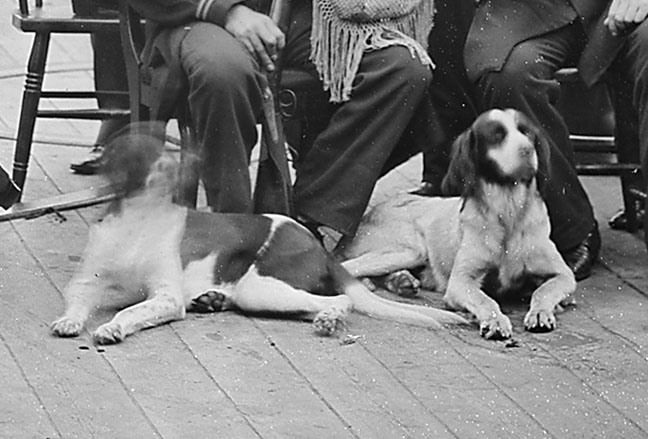Tag: dog
 Wikiipedia says: The dog or domestic dog (Canis familiaris) is a domesticated descendant of the wolf, characterized by an upturning tail. The dog derived from an ancient, extinct wolf, and the modern grey wolf is the dog’s nearest living relative. The dog was the first species to be domesticated, by hunter–gatherers over 15,000 years ago, before the development of agriculture.
Wikiipedia says: The dog or domestic dog (Canis familiaris) is a domesticated descendant of the wolf, characterized by an upturning tail. The dog derived from an ancient, extinct wolf, and the modern grey wolf is the dog’s nearest living relative. The dog was the first species to be domesticated, by hunter–gatherers over 15,000 years ago, before the development of agriculture.
Due to their long association with humans, dogs have expanded to a large number of domestic individuals and gained the ability to thrive on a starch-rich diet that would be inadequate for other canids. Over the millennia, dogs became uniquely adapted to human behavior, and the human-canine bond has been a topic of frequent study.
The dog has been selectively bred over millennia for various behaviors, sensory capabilities, and physical attributes. Dog breeds vary widely in shape, size, and color. They perform many roles for humans, such as hunting, herding, pulling loads, protection, assisting police and the military, companionship, therapy, and aiding disabled people. This influence on human society has given them the sobriquet of “man’s best friend.”
The generally accepted earliest dog remains were discovered in Bonn-Oberkassel, Germany. Contextual, isotopic, genetic, and morphological evidence shows that this dog was not a local wolf. The dog was dated to 14,223 years ago and was found buried along with a man and a woman, all three having been sprayed with red hematite powder and buried under large, thick basalt blocks. The dog had died of canine distemper. Earlier remains dating back to 30,000 years ago have been described as Paleolithic dogs but their status as dogs or wolves remains debated because considerable morphological diversity existed among wolves during the Late Pleistocene.
This timing indicates that the dog was the first species to be domesticated in the time of hunter–gatherers, which predates agriculture. DNA sequences show that all ancient and modern dogs share a common ancestry and descended from an ancient, extinct wolf population which was distinct from the modern wolf lineage. Most dogs form a sister group to the remains of a Late Pleistocene wolf found in the Kessleroch cave near Thayngen in the canton of Schaffhausen, Switzerland, which dates to 14,500 years ago. The most recent common ancestor of both is estimated to be from 32,100 years ago. This indicates that an extinct Late Pleistocene wolf may have been the ancestor of the dog, with the modern wolf being the dog’s nearest living relative.
The dog is a classic example of a domestic animal that likely travelled a commensal pathway into domestication. The questions of when and where dogs were first domesticated have taxed geneticists and archaeologists for decades. Genetic studies suggest a domestication process commencing over 25,000 years ago, in one or several wolf populations in either Europe, the high Arctic, or eastern Asia. In 2021, a literature review of the current evidence infers that the dog was domesticated in Siberia 23,000 years ago by ancient North Siberians, then later dispersed eastward into the Americas and westward across Eurasia.
Showing 1–16 of 71 resultsSorted by latest
-

Image ID: AZFV
$5.99 -

Image ID: AZBO
$0.99 -

Image ID: AYFL
$0.99 -

Image ID: AYHZ
$0.99 -

Image ID: ATWC
$0.99 -

Image ID: AHHU
$0.99 – $3.99 This product has multiple variants. The options may be chosen on the product page -

Image ID: AXZR
$0.99 -

Image ID: AYJV
$0.99 -

Image ID: AVSL
$4.99 -

Image ID: AVST
$4.99 -

Image ID: ASEJ
$5.99 -

Image ID: ASLS
$5.99 -

Image ID: ARAR
$6.99 -

Image ID: ARDS
$6.99 -

Image ID: ARDW
$6.99 -

Image ID: APWF
$3.99 – $6.99 This product has multiple variants. The options may be chosen on the product page